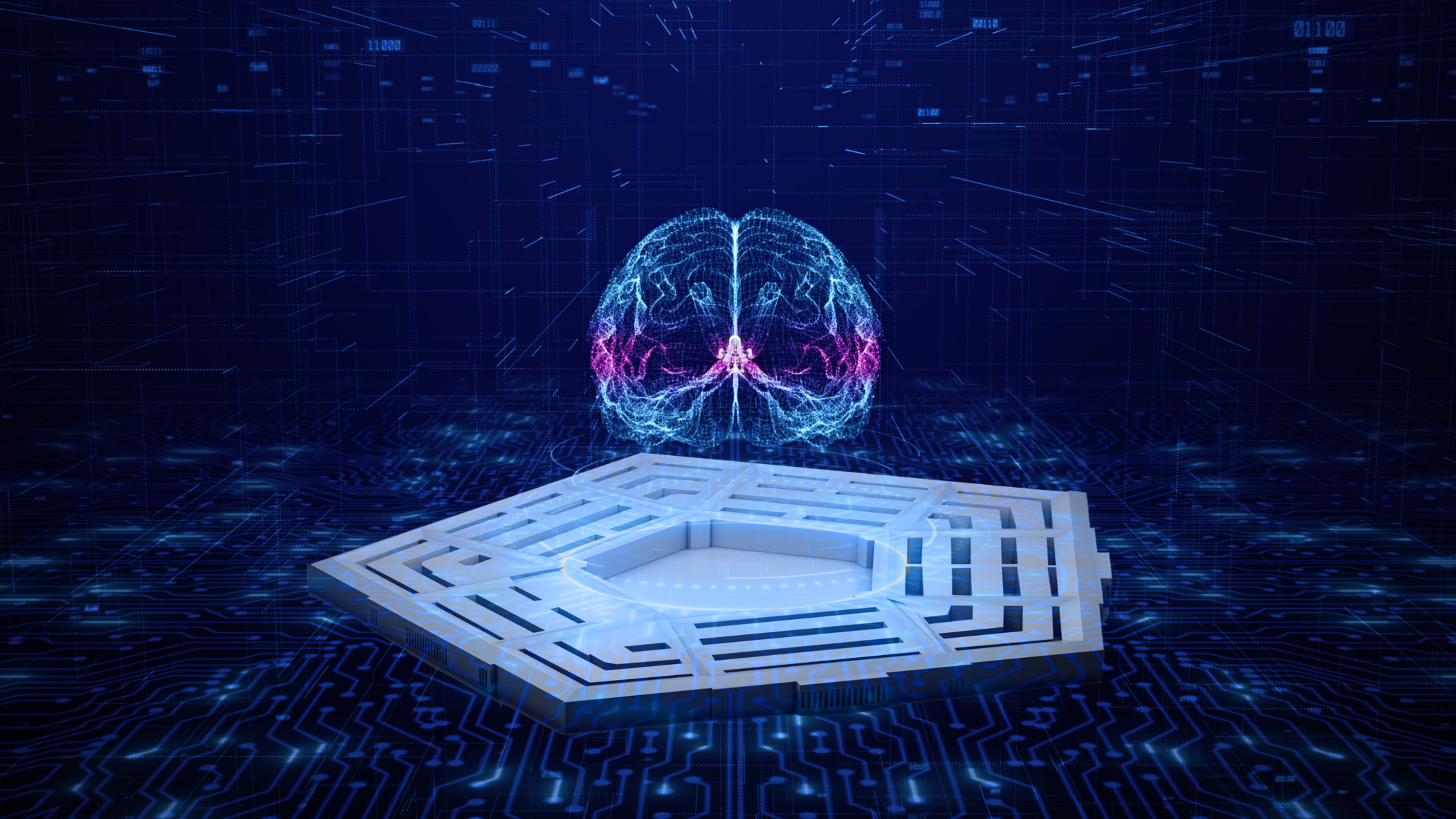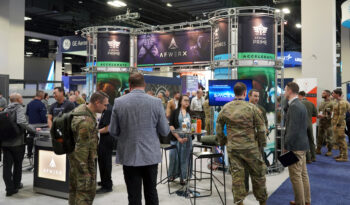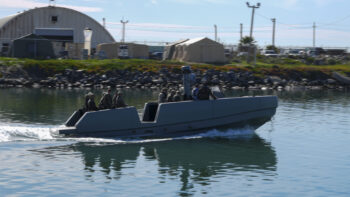
Pentagon grapples with growth of artificial intelligence. (Graphic by Breaking Defense, original brain graphic via Getty)
WASHINGTON — The Pentagon’s Defense Innovation Unit (DIU) and Chief Data and Artificial Intelligence Office (CDAO) are standing up two “AI battle labs” at US Indo-Pacific Command (INDOPACOM) and US European Command (EUCOM) in order to develop data analytic and AI capabilities with warfighters.
The labs will establish government-wide “BRAVO Hackathons” over the next year, according to a Sept. 27 Air Force press release. Joe Larson, deputy CDAO for algorithmic warfare, said that “by providing the seed funding to establish the AI Battle Labs in EUCOM and INDOPACOM, we will be designing and testing data analytic and AI capabilities with warfighters, not for them, informing and strengthening our ability to deliver exactly what they need to win.”
The DoD-led BRAVO Hackathons provide a venue for government and industry to test and demonstrate ideas and prototypes from prior hackathons that have contributed to DoD programs have focused on large language models, unmanned systems, sensing and targeting, and other areas, the press release says.
According to the press release, three BRAVO hackathons have produced 81 operational prototypes at three classifications, and 33 percent of projects from a March BRAVO 10 hackathon were “utilized in production of received follow-on funding commitments that totals over 75 times the cost of the hackathon itself.”
“Despite the speed and impacts from BRAVO hackathons, we are still finding the time from development of capabilities, calibrations, or tactics with operational data to employment in theater to be on the order of months or years,” Stuart Wagner, Air Force chief digital transformation officer and BRAVO AI battle labs executive agent, said.
“We are deploying these labs to drop this timeline by a factor of 100 — from months or years to days and eventually hours — by increasingly automating bureaucratic processes such as data classification determinations and authority to operate applications,” he added. “If successful, we will adapt our capabilities and tactics to our strategic competitors faster than they can adapt to us.”
Through the AI battle labs, “military members, civilians and federal contractors propose projects and form self-organizing teams that develop prototypes inside combatant commands,” the press release says. The labs, which will span multi-classifications, will collect and share data “ranging from logistics to cyber” and provide “central hubs for digital integration among federal entities, industry, coalition partners and American citizenry.”
The labs seek to interconnect combatant command, enterprise DoD and coalition partner capabilities from data ingestion and system integration to approved employment,” according to the press release. “The Air Force’s system-of-systems technology integration toolchain for heterogeneous electronic systems, or STITCHES, will integrate various Combatant Command and service level systems directly to the labs.”
This announcement follows DIU’s intent to become more embedded across the DoD enterprise. The innovation hub recently announced that it would be providing an embed to be a part of INDOPACOM’s new “Joint Mission Accelerator Directorate” who will be both the Deputy as well as the Chief Technology Officer.
DIU Director Doug Beck said in a statement that organization will work with the AI battle labs “to ensure that developers and companies who want to work with DoD data can rapidly access the environments they need to demonstrate operational relevance.”





















